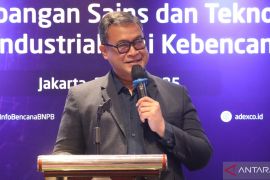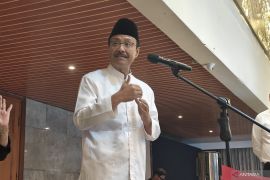The framework has been implemented as part of efforts to mainstream disaster risk reduction since 2015 by enforcing policies in collaboration with the National Development Planning Agency (Bappenas) and the Home Affairs Ministry, BNPB's deputy for systems and strategy, Raditya Jati, explained.
"The commitment of several ministries, institutions, and entities in disaster risk reduction is very supportive," Jati said.
According to him, the global-level commitment led to the formulation of Presidential Regulation No. 87 of 2020.
"The Master Plan for Disaster Mitigation (will prevail) for up to 25 years," Jati said.
Other countries may not have such a regulation, and this shows that the Indonesian government is striving to accommodate SFDRR to achieve its seven targets before 2030, he affirmed.
The first priority for bolstering disaster risk reduction is to understand the risks through data and information, then analyze them, and make them accessible to the public, he pointed out.
The second is governance, which encompasses planning and financing, and a program that will mainstream disaster mitigation efforts at the national and regional levels so that they can be carried out properly, he said.
The next priority deals with the question of how to invest in disaster risk reduction for future generations, specifically education, disaster literacy, and infrastructure strengthening in areas that are prone to earthquakes.
Then, how to rebuild better with preparedness in case of disaster. This means that after a disaster, earthquake-resistant houses can become a common feature, Jati explained.
"These four priorities are how to carry the spirit of resilience for Indonesia," he remarked.
Related news: BNPB head chairs plenary meeting on Sendai Framework evaluation
Related news: Weighing importance of global efforts for disaster risk reduction
Translator: Devi R, Kenzu T
Editor: Rahmad Nasution
Copyright © ANTARA 2022












